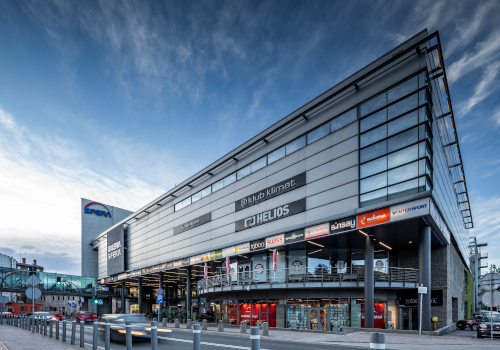Linked with history
Historical background
Up until 1918 twin city Bielsko-Biała and the surrounding area, which lay on the border of Silesia and Galicia, was the third largest centre for the woollen industry in Austria-Hungary, and later the second largest textile centre in Poland after Łódź. In addition to the woollen industry which predominated here, there were also flax, jute and hemp spinning mills.
Old factories located where SFERA 1 stands
The SFERA I complex stands on the former premises of the Albert Neumann flax spinning mill, built around 1863, which was acquired in 1875 by Carl Benjamin Schneider and converted into a jute spinning mill. In 1903 the factory was taken over by the Jute Industries jointstock company “Union” with head office in Vienna.
Among the many factories operating within the industry, three were located on the banks of the River Biała where SFERA II now stands.
- Situated in the northern part of today’s Shopping Centre were the premises of the Adolf Brüll & Sons forwarding company, dating from the middle of the 19th century, which closed down after 1930 (ul. Mostowa 2).
- The Edward Scholz wool and broadcloth dyeing mill, which was established around 1835, and owned from 1854-1886 by Ernst Arndt, was acquired in 1886 by Gustav Molenda and significantly extended (ul. Cechowa 16-18; today’s DH* Wokulski building also belonged to the factory).
- The Leopold Popper & Co. broadcloth factory began operating around 1860. In 1901 it came under the ownership of Karl Riesenfeld, and in 1919, under that of his sons Felix and Paul. During the interwar period the brand name KA-RI-BI (Karl Riesenfeld Bielsko) was used.
- The Samuel Brüll cloth-finishing mill, which began operating in the 1840s, was converted in 1882 by Emil Schorr into a broadcloth factory with fully integrated departments. From 1912 up until World War II the Landesmann & Kornhaber company functioned here (ul. Cechowa 22).
- After 1945, the complex of nationalised textile factories on the banks of the River Biała were made part of the Paweł Finder Woollen Industry Factories, which from 1970 onwards were known by the trademark FINEX.
GALERIA SFERA 1
1867
Designs for the construction of a gas plant at the Albert Neumann flax

END OF THE 19TH CENTURY
Workers at the C.B. Schneider jute spinning mil

1899
The C.B. Schneider jute spinning mill following a major fire

1899
A commission assessing damage following a major fire

1904
The villa of Herman Schneider, a shareholder in “Union”, at 27 Mickiewicza Street

The twenties of XX century
1920s: A sack sewing room in the “Union” factory complex

The twenties of XX century
1920s: A spinning mill in the “Union” factory complex

1928
Design for a distribution substation

The thirties of XX century
1930s: An advertising for “Union”

06.12.2001
Opening of Galeria SFERA

2001
The west facade of SFERA I with architectural features alluding to the boiler-house that formerly stood here

2022
Galeria SFERA today

Galeria SFERA 2
1912
Portrait of Gustav Adolf Molenda by Kazimierz Pochwalski

The twenties of XX century
1920s: Catalogue for the Gustav Molenda & Son company

1912
Factories on the River Biała with a view of the Town Hall Tower, fragment from a picture postcard

1930
Yarn samples in advertising material for the Ka-Ra-Bi company

1930
Design for a Persian rug by Ka-Ra-Bi

1912
Advertisement for the Paweł Finder Woollen Industry Factories

1935
Władysław Zakrzewski, Factories on the Biała River, engraving on copper

2009
Sfera II Shopping Centre with a view of the Biała River

2022
Galeria Sfera II today

This material was produced in collaboration with the Historical Museum in Bielsko-Biała.
Illustrations are taken from the Historical Museum’s own collections.
